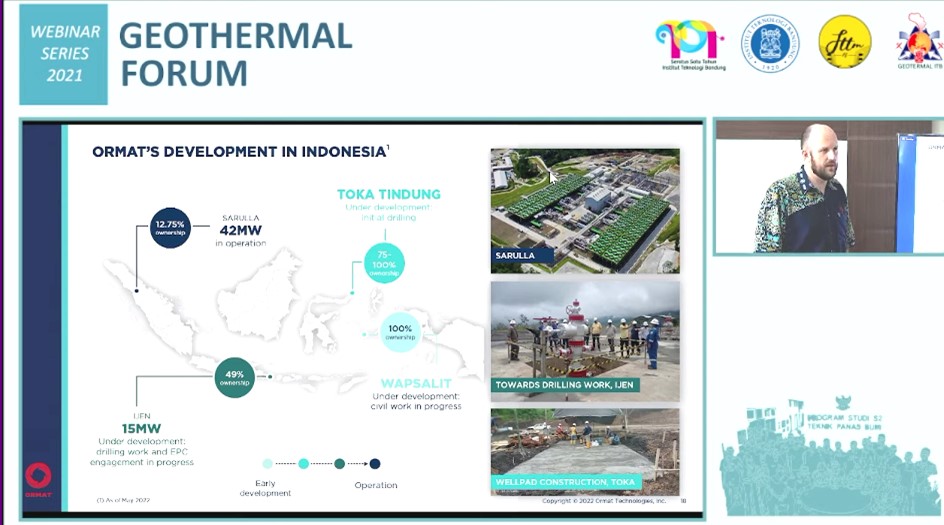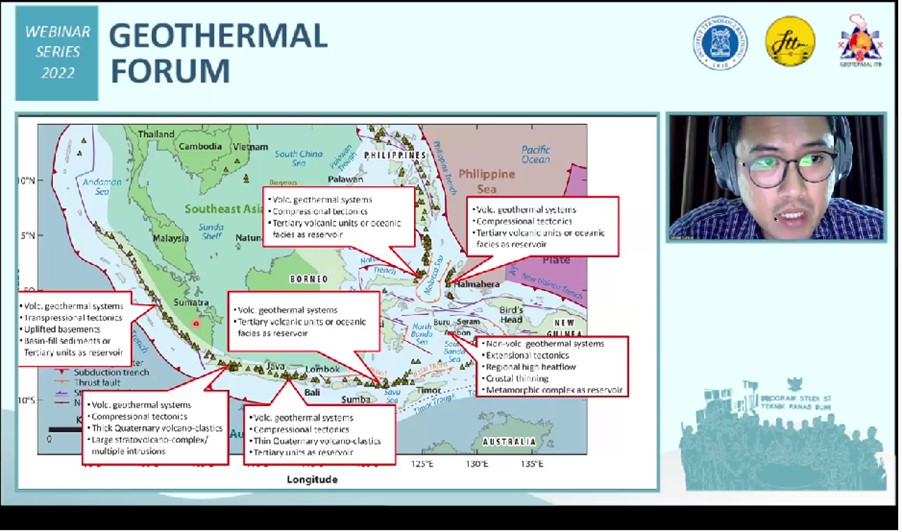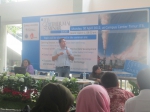Ormat Technologies to Employ the Prospects of Low-Temperature Resources for Indonesia’s Geothermal Industry

BANDUNG, itb.ac.id – Indonesia’s current capacity for geothermal sources is limited to its development in high-temperature areas. However, a survey from the Geological Agency of Indonesia revealed that reserves of alternative supplies low in temperature are abundant. Hence, notions to utilize these resources in developing low-temperature geothermal resources are being discussed presently.
The ITB FMPE (Faculty of Mining and Petroleum) Master’s Program in Geothermal Engineering held the 2022 Geothermal Forum on Friday (20/5/2022). This webinar series collaborated with Ormat technologies, a geothermal company from the United States of America, with guest speakers Ryan Libbey (Principal Geologist of Ormat Technologies) and Simon Webbison (Vice President of Exploration and Resources Management of Ormat Technologies).
As an international corporation based in Reno, Nevada, Ormat Technologies act as a provider of alternative, renewable geothermal-based technologies. The company has built more than 190 power plants with a capacity exceeding 3200 MW and operated 933 MW geothermal power plants in January 2021.
“Ormat Technologies aims to provide up to 29 Gigawatts from geothermal power plants expansion,” Simon stated. “The target is equivalent to twelve times the power generated in 2021.” This development can be accomplished by exploring the three geothermal prospects in Indonesia.

“Ormat Technologies' development of the geothermal industry in Indonesia using low-temperature resources is conducted in four regions. The first is at Ijen, East Java which is already in full operation with the power of 15 Megawatts. The next site in development is at Sarulla, North Sumatra, and is predicted to generate 42 Megawatts. The site at Toka Tindung, North Sulawesi is still in its drilling phase. The site at Wapsalit, Papua is also under construction,” Simon presented.
Ormat Technologies installed binary plants at their development sites. They are provided with special treatments that include 100% reinjection to support resource levels and efforts to prevent energy from being used up for the emission of NCG and vacuum. Other approaches are measures to avoid contact between geothermal fluids and components of the binary turbines, as well as creating high flexibility conditions to execute change in resources. “Our binary turbine is designed to be the biggest in the world with low manufacture and operational costs,” Simon added.
Moreover, Ormat Technologies owns pumps equipped with line shaft technology that raises the output of the well while preventing it from scaling and easing the separation process occurring inside. This helps eliminate the NCG emission and monitor the enthalpy of the procedure. “Many technologies implemented by Ormat are useful for various stages in exploration,” Ryan concluded.
Reporter: Yoel Enrico Meiliano (Food Engineering, 2020)
Translator: Ruth Nathania (Environmental Engineering, 2019)

scan for download








